The Death of Captain Waskow
|
|
AT THE FRONT LINES IN
ITALY, January 10, 1944 – In this war I have known a lot of officers who were
loved and respected by the soldiers under them. But never have I crossed the
trail of any man as beloved as Capt. Henry T. Waskow of Belton, Texas.
Capt. Waskow was a company
commander in the 36th Division. He had led his company since long before it
left the States. He was very young, only in his middle twenties, but he carried
in him a sincerity and gentleness that made people want to be guided by him.
"After my own father,
he came next," a sergeant told me.
"He always looked
after us," a soldier said. "He’d go to bat for us every time."
"I’ve never knowed
him to do anything unfair," another one said.
I was at the foot of the
mule trail the night they brought Capt. Waskow’s body down. The moon was nearly
full at the time, and you could see far up the trail, and even part way across
the valley below. Soldiers made shadows in the moonlight as they walked.
Dead men had been coming
down the mountain all evening, lashed onto the backs of mules. They came lying
belly-down across the wooden pack-saddles, their heads hanging down on the left
side of the mule, their stiffened legs sticking out awkwardly from the other
side, bobbing up and down as the mule walked.
The Italian mule-skinners
were afraid to walk beside dead men, so Americans had to lead the mules down
that night. Even the Americans were reluctant to unlash and lift off the bodies
at the bottom, so an officer had to do it himself, and ask others to help.
The first one came early
in the morning. They slid him down from the mule and stood him on his feet for
a moment, while they got a new grip. In the half light he might have been
merely a sick man standing there, leaning on the others. Then they laid him on
the ground in the shadow of the low stone wall alongside the road.
I don’t know who that
first one was. You feel small in the presence of dead men, and ashamed at being
alive, and you don’t ask silly questions.
We left him there beside
the road, that first one, and we all went back into the cowshed and sat on
water cans or lay on the straw, waiting for the next batch of mules.
Somebody said the dead
soldier had been dead for four days, and then nobody said anything more about
it. We talked soldier talk for an hour or more. The dead man lay all alone
outside in the shadow of the low stone wall.
Then a soldier came into
the cowshed and said there were some more bodies outside. We went out into the
road. Four mules stood there, in the moonlight, in the road where the trail
came down off the mountain. The soldiers who led them stood there waiting.
"This one is Captain Waskow," one of them said quietly.
Two men unlashed his body
from the mule and lifted it off and laid it in the shadow beside the low stone
wall. Other men took the other bodies off. Finally there were five lying end to
end in a long row, alongside the road. You don’t cover up dead men in the
combat zone. They just lie there in the shadows until somebody else comes after
them.
The unburdened mules moved
off to their olive orchard. The men in the road seemed reluctant to leave. They
stood around, and gradually one by one I could sense them moving close to Capt.
Waskow’s body. Not so much to look, I think, as to say something in finality to
him, and to themselves. I stood close by and I could hear.
One soldier came and
looked down, and he said out loud, "God damn it." That’s all he said,
and then he walked away. Another one came. He said, "God damn it to hell
anyway." He looked down for a few last moments, and then he turned and
left.
Another man came; I think
he was an officer. It was hard to tell officers from men in the half light, for
all were bearded and grimy dirty. The man looked down into the dead captain’s
face, and then he spoke directly to him, as though he were alive. He said:
"I’m sorry, old man."
Then a soldier came and
stood beside the officer, and bent over, and he too spoke to his dead captain,
not in a whisper but awfully tenderly, and he said:
"I sure am sorry,
sir."
Then the first man
squatted down, and he reached down and took the dead hand, and he sat there for
a full five minutes, holding the dead hand in his own and looking intently into
the dead face, and he never uttered a sound all the time he sat there.
And finally he put the
hand down, and then reached up and gently straightened the points of the
captain’s shirt collar, and then he sort of rearranged the tattered edges of
his uniform around the wound. And then he got up and walked away down the road
in the moonlight, all alone.
After that the rest of us
went back into the cowshed, leaving the five dead men lying in a line, end to
end, in the shadow of the low stone wall. We lay down on the straw in the
cowshed, and pretty soon we were all asleep.
Source: Ernie's War: The Best of
Ernie Pyle's World War II Dispatches, edited by David Nichols, pp. 195-97.
Pictures courtesy of The Lilly Library, Indiana University, Bloomington,
Indiana

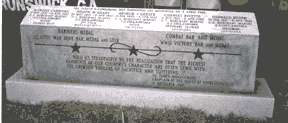


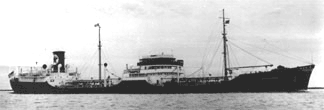
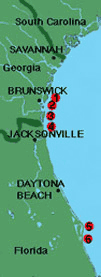

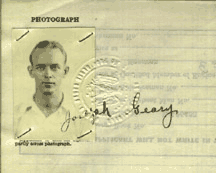

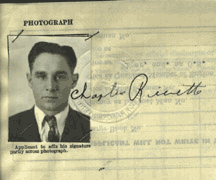

 St. Simons Island, Georgia
St. Simons Island, Georgia
